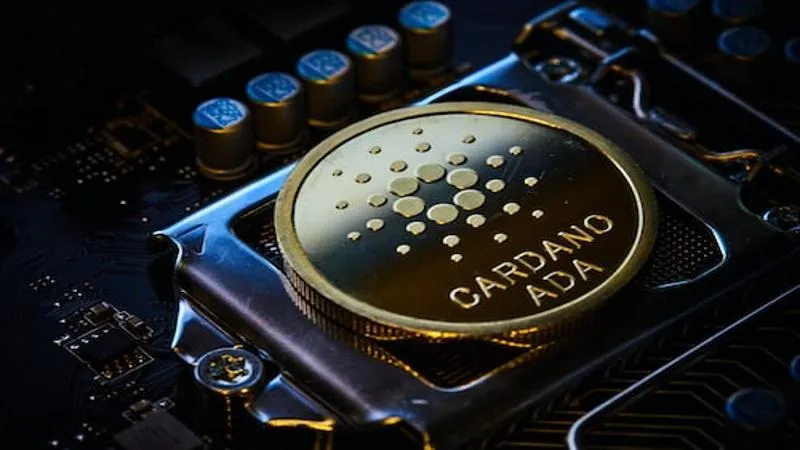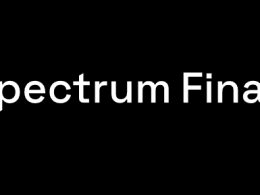Have you ever thought of how many world problems blockchain technology solves? Whether it is decentralized finance where you can enjoy better lending and equity or the democratization of information, all confined in one tech stack. Maybe you’ve invested in other areas and taking a turn toward this end. Or you have been in the space and don’t know which blockchain ecosystem to participate in. In either case, it’s time to consider Cardano as your number one option that presents itself as a sustainable blockchain.
Unlike traditional technologies, where companies claim to be sustainable as they manipulate the community about their efforts (improving their image), blockchain technology offers transparency, and apparent oversight, making it trustworthy. As a key driving parameter to consider, sustainability distills numerous environmental benefits. When addressed rightly, industry players can reduce energy consumption and emissions significantly, even within a decade of the inception.
Blockchain technology provides avenues for improving sustainability through effectively tracking and verifying emissions. Bearing that blockchain tech is immutable, accountable, and transparent, it’s possible to follow up on companies’ sustainability claims. Smart contracts can track companies’ carbon emissions across their operations.
Additionally, blockchain’s sustainability is enactable through tokenizing and digitally distributing environmental assets. Other than energy consumption and carbon credits, governments can outline clear standards for acceptable environmental impact and monitor the same using blockchain systems in the future.
This post guides you through the different adopted operation models in blockchain technology like proof-of-stake (PoS), proof of work (PoW), evaluates Cardano’s state as a sustainable blockchain, and runs you through its effort to contribute to environmental safety.
What is Proof-of-Work (PoW)?
Basically, the POW entails a consensus mechanism that uses significant computing efforts from a network of devices (expanding efforts) to solve encryptions. You are entitled to a reward if you successfully solve a puzzle; that’s how it works. As more participants (miners) join the network, the POW scales and, in turn, requires more (vast) energy. The good thing is that PoW allows for secure peer-to-peer (P2P) transactions without needing a third party like Escrow. Here’s a gateway to a deep dive into the Proof-of-Work (PoW) mechanism.
Mining, also known as PoW, is pivotal in Bitcoin’s operation mechanism. At the time of writing, Bitcoin’s mining activity consumes 99.37 terawatt hours (TWh) of electricity annually, according to a report by Digicomist. If you evaluate this further, that’s 0.55% of the world’s electricity, enough to run a country like Sweden or Malaysia. On 18th May 2021, Police stormed into a suspected cannabis farm only to discover 100 computer units mining bitcoin. Further investigation disclosed that the firm had stolen £16, 000 worth of electricity to mine £8,000 price of bitcoin.
You’d also agree that this is a high level of energy consumption in the global scope. The power consumption is derived from competition between miners. PoW’s underlying structure is designed to magnify the mining difficulty when more miners join the network. While you might think that that’s the end, let’s consider the miners’ efforts to keep up with the competition. To do this, miners invest in new hardware to stay in the game. Aren’t the two aspects expensive trade-offs to the environment?
Engineers have tried to enact different mechanisms like hashing algorithms to adjust the difficulty of PoW. The alternative mechanisms include Proof of Authority (PoA), Proof of Elapsed Time (PoET), and Delegated Proof of Stake (DPoS). However, the methods have yet to be widely adopted. That aside, whether they reduce the energy needs adequately is still subject to date. While that’s the case, here’s a game changer – Cardano’s Proof-of-Stake.
What is Cardano’s Proof-of-Stake (PoS)?
The Cardano network is based on the Ouroboros Consensus Protocol, the first of its kind, a proof of stake (PoS) entity specially designed to counter high levels of energy expenditure associated with other blockchain operation models like Bitcoin’s PoW. PoS achieves this goal by eradicating the massive computing resources needed for the functionality of the PoW algorithm. Under the hood, PoS relies on multiple random validators (as opposed to mining) to certify that a transaction is accurate before adding it to the blockchain. Staking in Cardano’s PoS entails determining the capability of a node to open blocks on the blockchain. Let’s break it down further.
A node will have a stake equivalent to its held ADA over the long term. Stake defines your interest as a pool participant and is secured by your pledged ADA. If you commit some ADA, you can’t use it because it is used for honest validation as collateral. Users who pledge ADA get rewards (transaction fees) distributed based on the staked amount. As a Cardano user, you can join a staking pool (a group of ADA holders who have pledged their coins) and collaborate to update the ledger, open new blocks, and earn rewards. There are some new terms here; read on to grasp how staking pools work.
Cardano’s PoS allows you to stake ADA and have the opportunity to become a validator. The validation and staking process stretches far with two operation structures; you can opt to become a stake pool operator or owner. If you are a stake pool owner, you delegate your ADA to a pool. Whether you’d like to create your pool (a private one or one that you invite others to join) or practice ownership by delegating your ADA to another pool, both options are viable. Suppose you’d like to be a stake pool operator. In that case, you’re a trusted person who maintains a stake pool by holding a pool’s key, monitoring nodes, renting servers, and other pool administration duties. More on that later; let’s take a turn and ration Cardano’s efforts on sustainability.
Cardano’s Design Rationale as a Sustainable Blockchain
Cardano’s resilience and sustainability are based on three building blocks; security, scalability, and interoperability. While Cardanos runs on the proof-of-stake (PoS) mechanism, Ourobos, its security matches that of proof-of-work (PoW) systems. Written using the Haskell programming language, the Cardano system is built using pure functions, guaranteeing functional correctness in all the core components. This design allows for component testing in isolation.
On paying attention to scalability, Cardano has Hydra, a protocol built to simplify the off-chain protocol and smart contract development; it means transactions and smart contracts run off the main chain. The core benefits realized with the approach are improving transaction time and minimizing storage requirements. Performance engineering evaluates whether development decisions propel Cardano towards a continuous long-term scalable environment in real-world open environment operations.
In the context of decentralization, Cardano’s design is incentivized to work against economic motives that drive the system toward centralization. For instance, with stake pools, an economic spur for growth is tied to them. Therefore, there’s cost efficiency with having few large stake pools, unlike many small pools. This, in turn, works against an economy where large stake pools dominate, and then, a pool doesn’t get too big. Practically, a pool is awarded in proportion to its stake.
Interoperability is captured in Cardano’s design for forging a sustainable system. Among its design innovations is the use of sidechains which allow for the sectionalization of the system, unlocking the ability of Cardano to interact with other platforms. A good instance to showcase this prowess is where sidechains run concurrently. If one part of the system fails, the rest runs as sections are maintained separately. As a result, the Cardano system is more reliable. Sidechains have plenty of benefits when acting on Cardano’s building blocks. More on-side chains here.
The last aspect of cultivating Cardano’s sustainability is governance. The Cardano treasury system offers a funding mechanism for the protocol. Controlled by the community, the Cardano community practices decentralized and collaborative decision-making to sustain its development and maintenance. The treasury is filled constantly by aggregating newly minted coins, a fraction from stake pool rewards, donations, transaction fees, and charity. Additionally, accumulated funds provide capital for Cardano Improvement Proposals (CIPs) that foster the development of new features in the ecosystem.
A voting mechanism democratizes the treasury by allowing ADA holders to decide how their funds are used when they vote on proposals. Democracy ensures that all stakeholders take part in decisions. The voting system pivots all decisions like protocol updates, funding initiatives, constitutional updates, and the minting of new tokens.
Evaluating Cardano’s Contribution to Environment Safety
Environmental safety is no joke. Cardano enacts the PoS operation model, unlike Bitcoin, which runs on PoW. As mentioned above, Bitcoin’s PoW is resource intensive. It catalyzes more electronic waste based on competition among miners who continuously seek improved computing hardware to keep leading in the mining process. In the PoS mechanism, network participants run nodes with the blockchain selecting nodes to add to the blocks based on stakes and other parameters. The main difference is crystal clear on the energy requirements.
Cardano’s PoS does not need massive amounts of computer power and time to solve random puzzles like in the case with BTC but runs on very low-powered processors like the Raspberry PI. As of this writing, over 40 million of these have been produced for schools in developing countries, costing about $40 -$70. Doesn’t this simplicity reduce plastic and electronic waste? Regarding energy consumption, Charles Hoskinson estimates that Cardano uses 0.01% energy of what BTC uses.
So, you’ve probably heard it; Cardano being called the green blockchain. It’s all based on the fact that Cardano’s layer 1 has advantages like far less energy consumption and the staking mechanism. You can read through this thread on Twitter.
Additionally, Cardano’s efforts explode beyond technical innovations like the side chains connected to soothe the main chains but further venture into land restoration activities. The Cardano ecosystem has joined hands with Veritree to plant over one million trees. Isn’t this ecosystem a cornerstone to building and utilizing global finances in a social operating system?
There’s more to learn about Cardano’s forest initiative, but here’s a teaser: the project stretches across many countries, including Kenya, Senegal, Madagascar, Nepal, Indonesia, and Haiti. Veritree’s business report lists Cardano’s restorative actions that impact nature. In Kenya, Cardano is restoring the mangrove forest in Kwale (to break poverty through more fishing grounds) and the Old Bonjoge forest in Nandi (to provide Kisumu city with fresh water and clean air). In Canada, Cardano is planting 16 distinct native species at Sackville and restoring the Kelp Forest at Sunshine Coast. The list continues, covering terrestrial reforestation in the USA, East Rwanda, and agricultural boost in Tanzania and East Rwanda.
Exploring the Blockchain You Need
The Cardano network presents itself as a decentralized blockchain with a unique position in the scope of sustainability. You’ve also been exposed to its initiatives on bettering the environment. As a secure, reliable, and interoperable blockchain, Cardano is here to materialize your vision and financial needs. As a stakeholder in the system, you’d also be a part of the initiative that helps restore the environment to its glory.
While this post has given you an overview of Cardano’s design, here’s an in-depth guide to the proof of stake algorithm that you can check out.










